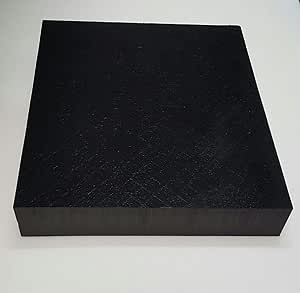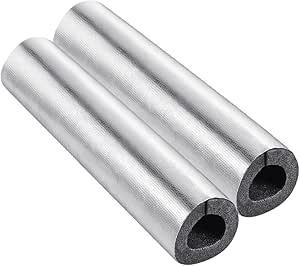Closed cell foam is a versatile material known for its unique properties and wide range of applications across various industries. Unlike open cell foam, which contains interconnected pores, closed cell foam consists of cells that are completely sealed, providing distinct advantages in insulation, flotation, and cushioning. In this article, we will explore the benefits of closed cell foam, its applications, and the factors to consider when choosing this material for specific uses.
What is Closed Cell Foam?

Closed cell foam is a type of foam made from materials such as polyethylene, neoprene, and EVA (ethylene-vinyl acetate). Its structure is characterized by tightly packed cells that do not allow air or water to permeate, making it an excellent choice for a variety of applications. This foam is available in various densities, thicknesses, and colors, allowing for customization based on the intended use.
The Benefits of Closed Cell Foam

The advantages of closed cell foam make it a preferred choice in many applications. Here are some of the key benefits:
- Water Resistance: Closed cell foam is impervious to moisture, making it ideal for applications in wet environments, such as marine and outdoor settings.
- Insulation Properties: With a lower thermal conductivity than open cell foam, closed cell foam provides superior insulation, helping to maintain temperature and reduce energy costs.
- Buoyancy: The sealed cells give closed cell foam excellent buoyancy, making it suitable for flotation devices and marine applications.
- Shock Absorption: Closed cell foam’s density allows it to absorb shock and provide cushioning, making it an excellent choice for packaging and protective gear.
- Durability: Resistant to chemicals, UV light, and abrasion, closed cell foam is durable and long-lasting, even in harsh environments.
- Lightweight: Despite its strength and durability, closed cell foam is lightweight, making it easy to handle and transport.
Applications of Closed Cell Foam

Closed cell foam is used across numerous industries due to its diverse range of benefits. Here are some common applications:
1. Construction and Insulation

In the construction industry, closed cell foam is often used for insulation purposes. Its moisture resistance and thermal properties make it a popular choice for:
- Insulating roofs, walls, and floors in residential and commercial buildings
- Sealing gaps and cracks to improve energy efficiency
- Providing soundproofing in music studios and other sensitive environments
For example, according to the U.S. Department of Energy, using closed cell spray foam insulation can significantly reduce energy bills by as much as 50% compared to traditional insulation methods.
2. Marine and Water Sports

Closed cell foam is commonly used in the marine industry due to its buoyancy and water resistance. Applications include:
- Flotation devices like life jackets and buoys
- Sealed compartments in boats and kayaks
- Padding for water sports equipment like surfboards and paddleboards
A case study from the National Marine Manufacturers Association highlights that closed cell foam in life jackets increases safety and comfort for users, thereby boosting compliance with safety regulations.
3. Packaging and Shipping
In the packaging industry, closed cell foam is widely utilized for its shock-absorbing properties. It is used for:
- Packing fragile electronics and glass products
- Custom inserts for shipping containers
- Protection for automotive parts during transportation
The International Safe Transit Association reports that using closed cell foam can reduce shipping damage rates by up to 30%, leading to significant cost savings for manufacturers.
4. Sports and Fitness Equipment
Closed cell foam is also found in various sports and fitness applications, including:
- Padding for protective gear such as helmets and shin guards
- Foam rollers and mats for physical therapy and exercise
- Shock-absorbing surfaces in gyms and recreation centers
For instance, many fitness centers use closed cell foam mats to provide cushioning for users, reducing the risk of injury during workouts.
5. Automotive Industry
In the automotive sector, closed cell foam is used for:
- Insulation in vehicle interiors for noise reduction and temperature control
- Sealing components to enhance durability and performance
- Providing cushioning in seats and dashboards
The use of closed cell foam in cars has been shown to enhance passenger comfort and safety, as well as improve vehicle efficiency by reducing weight.
Choosing the Right Closed Cell Foam

When selecting closed cell foam for a specific application, it is essential to consider several factors:
- Density: The density of the foam will affect its durability and performance. Higher density foams are typically more durable and provide better insulation.
- Thickness: The thickness required will depend on the application and the level of insulation or cushioning needed.
- Material: Different materials offer varying properties such as chemical resistance, flexibility, and cost. Choose a material that aligns with the specific demands of your application.
- Environmental Impact: Consider the environmental impact of the foam. Some closed cell foams are made from sustainable materials and are recyclable.
Closed cell foam is a highly effective material that offers numerous benefits and applications across various industries. Its water resistance, insulation properties, buoyancy, durability, and shock absorption capabilities make it a versatile choice for construction, marine uses, packaging, sports, and automotive applications. As industries continue to innovate and seek efficient solutions, understanding the advantages of closed cell foam will enable businesses to make informed decisions that enhance performance and reduce costs.
In summary, closed cell foam stands out as a superior material for numerous applications, providing a combination of functionality and reliability. By carefully considering the specific needs of each application, users can harness the full potential of closed cell foam to achieve optimal results.